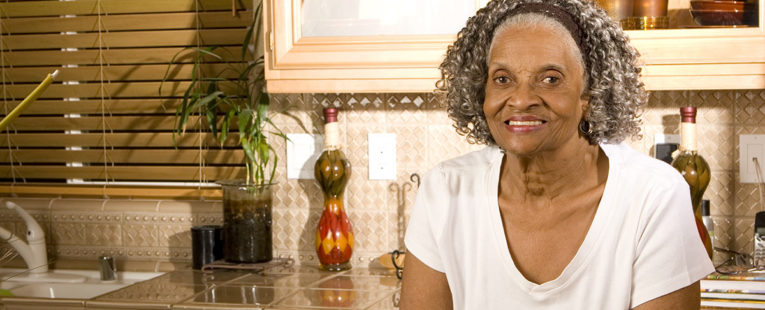Nobody wants to be that person in the iconic television commercial: “I’ve fallen and I can’t get up!”
And yet, if you are 65 or older, the odds are pretty strong you will be that person someday. Statistics show that more than 25% of seniors will experience a fall. Nearly half of those who fall but are not injured still require help getting up.
“I have people tell me, ‘I don’t fall. I’ve never fallen,’” Karen Schaidle said. “Well, that might be true. Until you fall.”
Karen is the marketing liaison for personal response systems with OSF HealthCare. She preaches the importance of those medical alert devices people wear as a “just in case” safeguard. She recently shared her message during a presentation at OSF Senior World, an outpatient service of OSF HealthCare Saint Francis Medical Center in Peoria.
Risks and advantages
The “can’t get up” part of a fall event is critical.
If a person is left unattended, muscle cells can start to break down within the first 30 minutes after a fall. Pressure sores can set in. The individual can become dehydrated. If the fall occurs outdoors in cooler weather, hypothermia is a risk.

“With long lie times, it’s amazing what can happen,” Karen said. “But if you get to the person quick enough, you can prevent a lot of things.”
Karen emphasizes that personal emergency response systems aren’t simply for seniors or others at risk for a fall. The advantages of a device can be extensive, especially for someone who lives alone.
She tells the story of a woman in Peoria whose home was being burglarized. When the woman heard the noise, she didn’t have to look for her phone. She simply pushed the button on her pendant. Overhearing her report the crime in progress and knowing help was on the way, the burglars quickly fled.
Systems offer many options
Personal response systems are available with an array of features and price points.

They are designed to be worn around the neck or wrist. They run on batteries and are waterproof. The most basic devices simply consist of a button that must be pushed to send an alert. Others are designed to automatically alert the system call center if the wearer has fallen.
You can get a home-based device or opt for one with GPS that connects you with emergency assistance wherever you go. Wireless technology is available.
OSF HealthCare partners with Philips Lifeline, which offers an extensive line of personal response systems.
“They were the pioneer with this,” Karen said. “We visited call centers for different vendors. They let us sit there and listen to actual calls.”
As soon as an alert comes in, essential information immediately is available to the personnel at the call center. That includes the client’s name, address and phone number, what medications they take, their medication allergies and how to gain entry to the home, including passcodes or location of a spare key, if necessary.
Falls can happen to anyone
Karen said the main concern expressed about a personal emergency response system is the price. But subscriptions to Lifeline services start as low as $29.95 per month, and individuals who meet certain criteria – such as chronic disease and being on multiple medications – can qualify for reduced costs. A one-month free trial program also is offered.

Ironically, another point of resistance comes from the old TV commercial, Karen said. Even though it created awareness of the need for personal response devices, the ad was widely parodied. People who could have benefitted from a device avoided purchasing one.
“They’ll say, ‘Oh, that’s not me. I don’t need one. I’m not old enough,’” Karen said.
“But falls can happen to anyone. I fell off a ladder in my basement. This is for anyone who lives alone.”
For more information on personal response systems, click here, or call (888) 289-2026.
OSF Senior World offers free regular programs for seniors and their caregivers. Attend the September 10 session, “Caring for the Caregiver,” aimed at providing information and resources designed to empower caregivers. The program is from 4-5 p.m. at OSF Senior World, 719 N. William Kumpf Blvd., Ste. 300, in Peoria.
Last Updated: February 9, 2022
